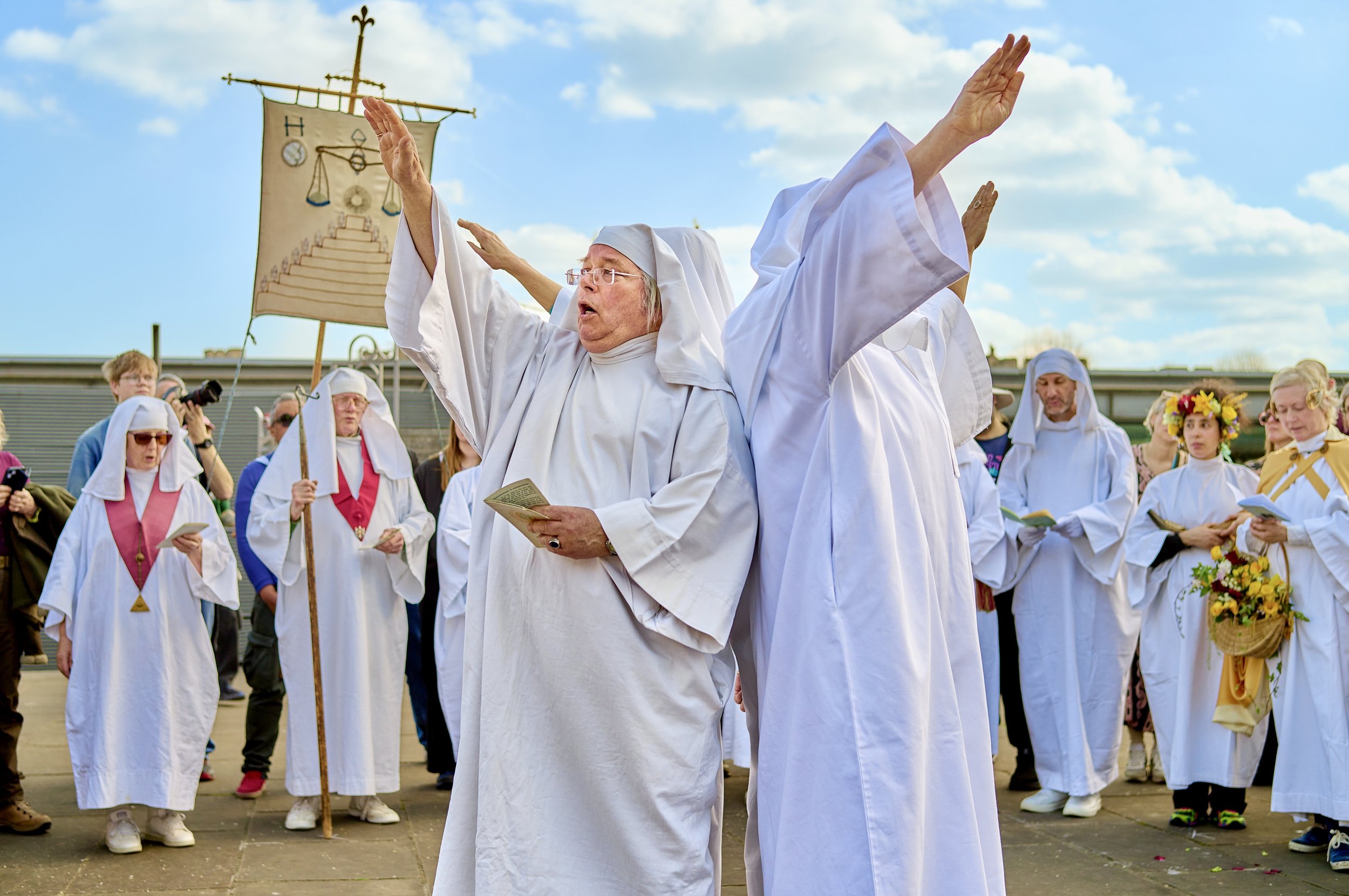Nothing is so beautiful as Spring
The vernal equinox marks the balancing moment when day and night are roughly equal in length, signalling the start of spring and an ancient truth: that birth, life, and death are not separate but threads woven into an endless cycle. The Druid celebrates this balance and the equinox battle between darkness and light.
““Nothing is so beautiful as Spring –
When weeds, in wheels, shoot long and lovely and lush;””
These are the opening lines from Gerard Manley Hopkins’s 1877 poem “Spring.” This joyous celebration of nature’s rebirth resonates with the equinox’s moment of equilibrium and life awakening.
Equinox Rites
The earliest celebrations of the vernal equinox date back to the Neolithic era. Over the millennia, Pagan springtime traditions became established, influenced by Anglo-Saxon culture between the 5th and 7th centuries CE, before being layered with Christian elements from the 7th century onward. While Easter Sunday dates vary, the equinox calculates its timing. At Easter, the Christian story celebrates the crucifixion and resurrection of Jesus Christ.
Druid equinox celebrations in England are primarily reconstructions, drawing on this rich historical background. These gatherings symbolise a return to ancient roots, reflecting a spring story that spans thousands of years and evolves with each cultural shift. In keeping with Druidic perspectives, particularly those emphasising nature, cycles, and personal growth, ‘The Druid Order’ metaphorically describes a seed planted in your heart at birth that grows in personal evolution to embody all your life’s events and leaves at death. Like an acorn’s seed contains within it a mighty oak tree.
Tower Hill
The Lady and Maids outside The Ship Pub ©️Martin Urch
On the 20th of March 2025, we celebrated the renewal of life in spring. In sun-warming rays, we generally begin to feel better within ourselves, and it was fitting to see blue skies on the warmest day of the year so far. I joined The Druid Order companions at The Ship pub on London’s Heart Street, dressing for their vernal equinox celebration. They put on ceremonial white robes, headdresses, and colourful tabards, with the Lady— the Earth Mother—and Maids adorned with flowers and bearing the Horn of Plenty, representing an emblem of the eternal. Around 30 Druids, following the leading Sword Bearer, then processed along Byward Street in meditation and silence.
The Druid Order assembled on Tower Hill ©️Martin Urch
The Druid Order holds its vernal equinox rites on Tower Hill, a place redolent of sadness, which overlooks the Tower of London. The folklore surrounding Tower Hill is deeply intertwined with its history as a public execution site from 1381 to 1780, where over 125 people met their deaths, often by beheading. Many executed there—nobles, rebels, and traitors alike—had their heads adorned on London Bridge as warnings. Notable ghostly figures include Sir Thomas More, beheaded in 1535 for refusing to recognise Henry VIII as head of the Church of England, and Simon Fraser, 11th Lord Lovat, the last man beheaded in England in 1747 for his role in the Jacobite Rising.
Druid No.7 May there be Peace in the North ©️Martin Urch
With its reputation for echoes of the dead and being one foot in the mythical world, Tower Hill is a unique setting for this resurrection story. Druids formed a unifying circle on the Terrace, where the Herald entered the centre to sound the call to the North, South, West and East. Then, under the equinox banner, the Chief Druid presented the Sword towards each of the four compass points, asking for Peace before leading a ceremony that included uplifting words, meditations and actions honouring the balance of light and darkness, the renewal of spring, and the interconnectedness of nature and humanity. In closing, Druids No.3, N0.5, No.7 and No.9 repeated the compass points asking for Peace worldwide.
Sword Bearer leading a return to The Ship pub ©️Martin Urch
Conclusion
Ancient Druids were the Celts’ priestly, political, and intellectual class, deeply tied to nature, spirituality, and life cycles. The idea of a seed holding latent potential poetically mirrors some modern Druid themes using the oak’s symbolism for personal growth, transformation, and renewal. To close this ceremony, the Presider said, “In peace, these rites began; in peace, we bring them to a close. May there be peace amongst us until we meet again.” At this time of world instability, technocratic beliefs and political war-mongering, there is eternal wisdom in the Druid’s philosophical vernal message that we must ‘care for each other’.
What Next
On April 23rd, 2025, I will join St. George’s Day celebrants in Trafalgar Square for their festivities about the Turkish Christian martyr who became England’s patron saint. Join me in the fascinating tale of cultural adoption, religious fervour, and medieval branding.
Martin Urch Photography owns the copyright to all writing and images




